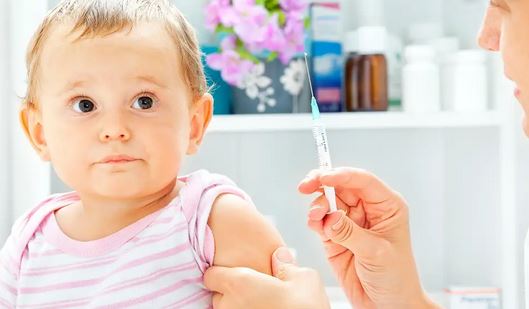The popular saying “better safe than sorry” applies perfectly to vaccination. Many common diseases in worldwide are no longer a public health problem because of the mass vaccination of the population. Poliomyelitis, measles, rubella, tetanus and whooping cough are just a few examples of common illnesses in the past that the new generations hear only in stories. The risk of a child developing a serious complication due to the vaccine is much lower than the risk of the child getting the disease. There is no comparison. Before being eradicated with massive vaccine use in the late 1970s, smallpox killed 300 million people in the 20th century alone. Measles, a highly contagious disease, was responsible for about 2.6 million deaths a year before 1980, when intense vaccination campaigns began. Polio cases, which caused childhood paralysis, effected 63% of world’s total population.
What are the types of vaccines?
The vaccines consist of inactivated or attenuated microorganisms and substances that are introduced in the body to stimulate the reaction of the immune system so contact a causative agent of disease. There are two main types of vaccines:
Attenuated Type Vaccines – These are vaccines that have in their composition living organisms that cause diseases that mutate in the laboratory to make them weak.In this way these living organisms can retain their characteristics but are unable to cause disease in healthy people.Examples of this vaccine are those that combat measles, mumps, rubella and yellow fever.
Inactivated type vaccines – These are vaccines that have in their composition parts of organisms that are no longer alive, such as proteins that are capable of inducing antibody production without causing disease. The main inactive type vaccines are: against hepatitis A and B, rabies, meningitis, cholera and typhoid.
8 crucial vaccination for children
Watch out for these points, and if you have a vaccination card, you will be able to know the missing doses – and which vaccines. Also, check this 6 month baby food chart for Indian climate because, building immunity from inside is as important as securing your kids with vaccination from outside.
BCG
This BCG primary vaccination protects your child from serious stage of tuberculosis. It should be applied in the first month of life, on the right arm and the reaction occurs in the following weeks, only local care such as cleaning with soap and water.
Hepatitis A and B
The vaccine is very safe and effective with protection of over 95%. It can be applied from the first day of life and is recommended within 12 hours of birth to prevent mother-to-child transmission of the virus. The vaccine should be given in three doses: the first two months apart and the third six months after the first.The hepatitis A vaccine has already entered the basic vaccination schedule.
Penta / DTP
The Penta / DTP vaccine offers protection against five diseases diphtheria, tetanus, whooping cough, Hepatitis B, infections caused by hemophilicinfluenza type b bacteria. It is given at 2, 4 and 6 months of age and is reinforced on two occasions – at 15 months and at 4 years.
VIP / VOP
The VIP / VOP vaccine protects against polio – childhood paralysis. It is given at 2 month, 4 months and 6 months of life stage. Boosters should be taken at 15 months and 4 years – and also during annual multi-vaccination campaigns. The first three doses are injected Polio Inactivated Vaccine (VIP). The other boosters are usually attenuated virus in droplets.
10-valent pneumococcal
The 10-valent pneumococcal provides protection against ten pneumococcal bacteria subtypes. The doses are separated in two stages – at 2 months and second, 4 months. The booster is done at 12 months. In consultation and private networks, pneumococcal is 13-brave and protects against three more types of pneumococcus, in addition to those offered by the public network, increasing the protection of the baby.
Yellow Fever
At the early stage of 9 months, this yellow fever vaccination must be done – single dose. There was a booster at 10 years. However, there was a change in the vaccination schedule and this dose is no longer needed, just for risk areas. The yellow fever vaccine is safe and effective. People who have been vaccinated with a single dose, immunity occurs around 10 days after application and provides lifelong protection.
Triple Viral
The triple viral protects against measles, rubella and mumps. It is the virus vaccine available on the public network. Two doses should be given, the first at 12 months of age, a booster at 15 months and another between 4 and 6 years of age. In addition to measles, mumps and rubella, it also protects against chickenpox.
HPV
The HPV vaccine is for girls ages 9 to 14 – and also for boys ages 12 to 13. Human papillomavirus (HPV) is sexually transmitted and is related to cervical cancer. Therefore, the goal is to immunize children well before the onset of sex, thus reducing the rates of this cancer.
What needs to be done to get your child vaccinated?
To do this, simply go to a health clinic with the vaccination card in hand. For those who lost the vaccination card, the orientation is to look for the health clinic where they received the vaccines to retrieve the vaccination history and make the duplicate. The vaccines are essential to shield the body against diseases that threaten the health, at all ages.
Also Read – Benifits Of Dental Implants


